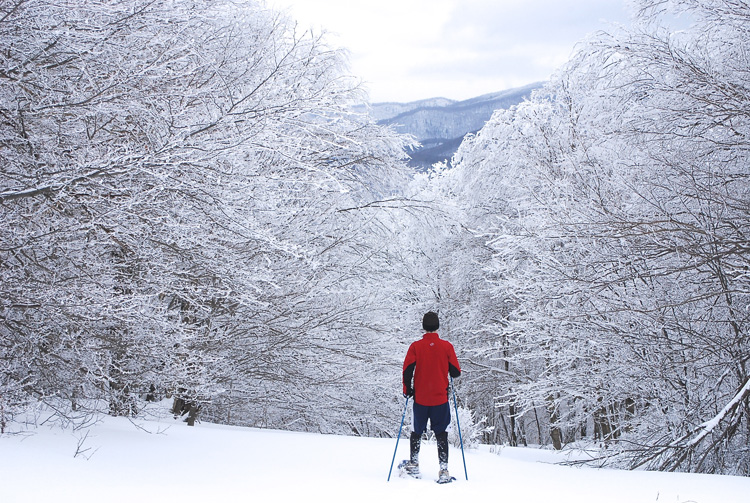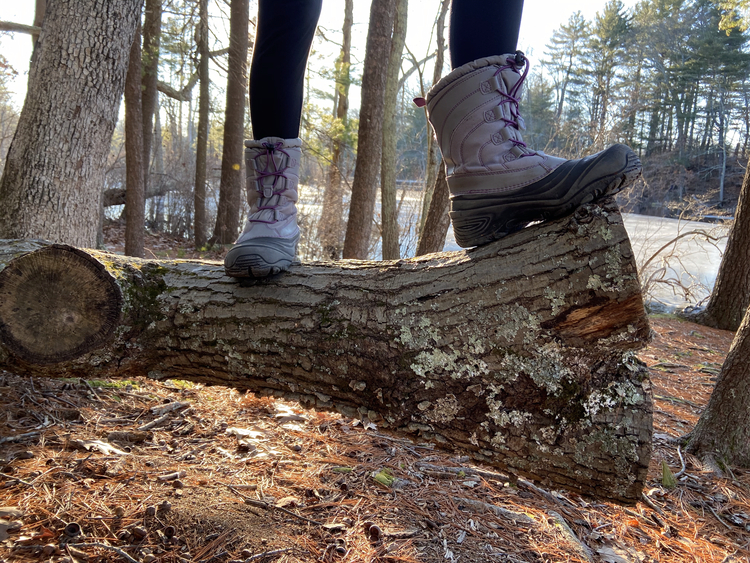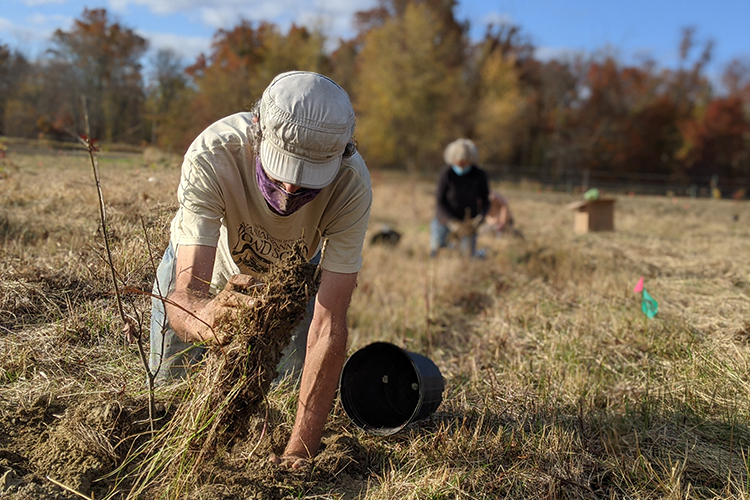Winter is a great time for outdoor adventures: sledding, building snowmen and snow forts, snowshoeing, cross-country skiing, winter hiking, and more. But cold-weather activities can quickly lose their allure—or become downright dangerous—if you’re not dressed for comfort and warmth. Luckily, it’s not complicated or expensive to clothe yourself appropriately for winter weather. Here’s a guide so you can plan ahead.

Layers, Layers, Layers
You can always take layers off, but you can’t put clothes on that you don’t have. Dress for the activity you are going to be doing, but always consider that you may be out longer than you think and pack extra clothing. Dressing in multiple light, comfortable layers will allow you to easily don and doff items as your needs and activity level fluctuate. Plus, It’s the air trapped between your layers that really keeps you warm, so aim to have a moisture-wicking base layer (more on that in a moment), an insulating middle layer, and an outer “shell” layer that protects you from wind and rain.
And don’t forget your gloves, hat, and scarf. It’s a myth that we lose half our body heat through our heads, but any exposed skin is going to release precious warmth, so it’s best to bundle up the face, scalp, and neck, especially in windy conditions. The wind pulls heat from your body even faster than still air thanks to “forced convection,” the same mechanism that allows a fan or breeze to cool you off on a hot day (it’s also why we blow on hot food to cool it down).

Keep Dry
Whether it’s from sweat, precipitation, or humidity in the air, water is your enemy when it comes to conserving heat. When gearing up, plan to be warm enough that you can enjoy yourself but not so warm that you sweat through your clothes—even a moderate amount of activity can have you working up a sweat in no time. Damp clothes plus cool air will give you a chill as your heart rate slows down.
Materials matter, too: Steer clear of absorbent cotton clothing, and opt instead for moisture-wicking materials like wool and activewear synthetics, which draw moisture away from the skin and help it evaporate without stealing heat. This is especially true for socks. Your feet expel a lot of moisture that gets trapped inside your boots. Wool socks can insulate and keep you warm even when moderately wet.

Other Gear
Calories are the fuel that your body burns to create heat, so make sure you pack plenty of water and some snacks to help keep you warm and enjoying the outdoors. But remember, it takes the body a little time to turn food into warmth, so don’t wait until you’re hungry or thirsty to refuel!
Be kind to your feet and opt for boots that are waterproof, insulated, and tall enough to keep snow and water out, but never so tight that they restrict blood flow.
And if you’re planning a long hike (say, more than 1.5 hours), add a first aid kit, flashlight with extra batteries, and an emergency blanket to your minimum gear. Hand and foot warmer packs are a great addition to any winter hiking bag, but they are not a replacement for proper clothing.

Stay Aware, Be Proactive
Your body is generally pretty good at telling you what it needs, so pay attention to what it is signaling and adjust your layers as frequently as you need to. If you start to warm up, consider shedding a layer. Likewise, make a practice of noticing when you start to get cold and adjust accordingly.
Have a full bladder? This could be your body responding to a drop in temperature. When exposed to cold, your body will begin to constrict blood flow to your extremities to conserve heat around your vital organs. The resulting increase in blood pressure triggers the kidneys to filter out excess fluid to reduce blood volume (called cold diuresis), which can lead to an increased frequency of urination. Cold diuresis is also dehydrating, so try to sip water frequently, even if you don’t feel thirsty.
While it’s normal to feel the need to pee more when it’s cold out, this can also be an early warning sign that you may be getting too cold. If you start shivering or notice white or blueish patches of skin forming (early signs of hypothermia and frostbite, respectively), it’s time to get inside and get warm right away.
These are our top recommendations, but what about you? What are your best tricks for staying warm and comfortable during winter activities? Let us know in the comments!






